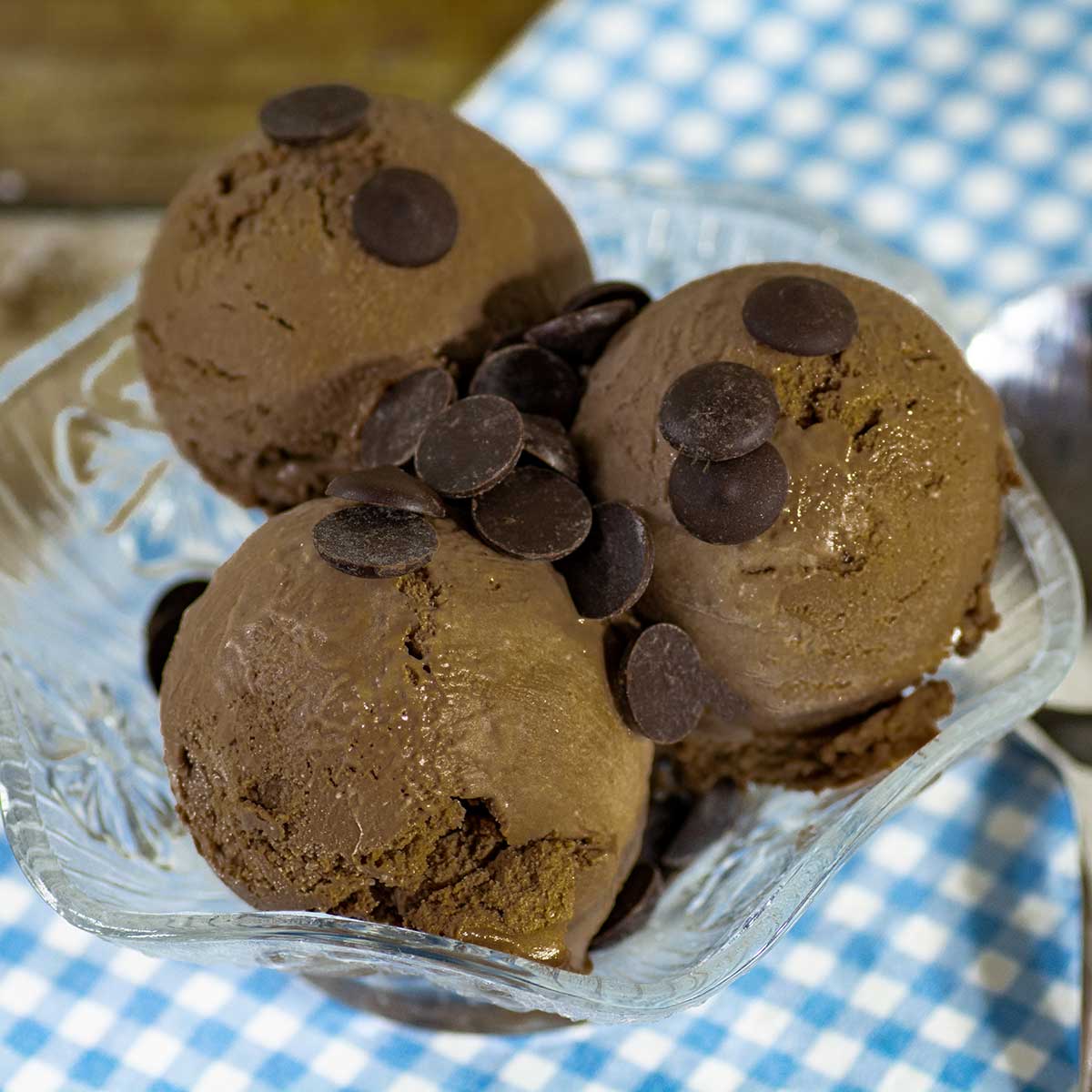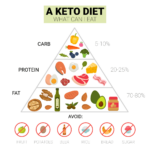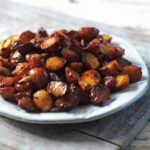Indulge your sweet tooth without derailing your keto journey! This guide unveils the secrets to crafting creamy, delicious keto-friendly ice cream right in your own kitchen. We’ll explore a variety of recipes, from coconut cream’s rich indulgence to the surprising smoothness of avocado-based delights. Discover the art of ingredient substitution, mastering techniques to achieve the perfect texture, and learn how to effortlessly track your macros. Prepare to embark on a culinary adventure that satisfies both your cravings and your dietary goals.
Imagine the velvety texture melting on your tongue, the tantalizing flavors dancing on your palate – all while staying true to your keto lifestyle. This isn’t just about creating a low-carb dessert; it’s about mastering a skill, experimenting with flavors, and enjoying the creative process of transforming simple ingredients into a decadent treat. Whether you’re a seasoned keto chef or a curious beginner, this comprehensive guide will equip you with the knowledge and confidence to create your own keto ice cream masterpieces.
Ingredient Selection & Substitutions

Creating delicious keto-friendly ice cream hinges on carefully selecting ingredients that deliver both creamy texture and sweetness without derailing your low-carb goals. The right sweeteners and fats are key to achieving that perfect balance.
Keto-Friendly Sweeteners for Ice Cream
The sweetness of keto ice cream relies entirely on sugar substitutes. Each sweetener offers a unique flavor profile and impacts the final texture differently. Choosing the right one depends on your preference and the desired outcome.
- Erythritol: A sugar alcohol with a mild sweetness and minimal impact on blood sugar. It offers a clean taste and blends well with other sweeteners, often used to enhance the sweetness and texture of other options. It contributes to a smoother, less icy texture compared to some other keto sweeteners.
- Monk Fruit: Extracted from monk fruit, this natural sweetener boasts intense sweetness, making it economical to use. However, it can sometimes leave a slightly aftertaste, so it’s often best blended with other sweeteners like erythritol to balance the flavor. It can contribute to a slightly softer texture.
- Stevia: Another natural, plant-based sweetener known for its intense sweetness. Similar to monk fruit, it may have a noticeable aftertaste for some individuals, and is often best combined with other sweeteners for a more balanced flavor profile. It generally doesn’t significantly impact the ice cream’s texture.
- Allulose: A rare sugar with a similar sweetness to sucrose but with minimal impact on blood sugar. It provides a creamy texture and melts smoothly, making it ideal for ice cream. However, it can be more expensive than other options.
Keto Ice Cream Recipes: A Trio of Fats
The richness and creaminess of your keto ice cream are determined by the fat source. Here are three recipes showcasing different keto-friendly fats:
Coconut Cream Ice Cream
This recipe delivers a rich, tropical flavor. Imagine a creamy, dreamy texture with a hint of coconut.
Ingredients: 1 can (13.5 oz) full-fat coconut milk, 1/4 cup erythritol, 1 teaspoon vanilla extract.
Instructions: Chill coconut milk thoroughly. Blend all ingredients until smooth. Pour into a freezer-safe container and freeze for at least 4 hours, stirring every hour to prevent large ice crystals from forming.
Heavy Cream Ice Cream
This recipe provides a classic, decadent ice cream experience, reminiscent of traditional ice cream but without the sugar.
Ingredients: 2 cups heavy cream, 1/2 cup erythritol, 1 tablespoon vanilla extract, 1/4 teaspoon salt.
Instructions: Chill heavy cream thoroughly. Whip heavy cream until soft peaks form. Gradually add erythritol and vanilla extract, continuing to whip until stiff peaks form. Add salt and gently fold to combine. Pour into a freezer-safe container and freeze for at least 4 hours, stirring every hour to break up ice crystals.
Avocado Ice Cream (Yes, Really!)
Avocado provides a surprisingly creamy base, offering a unique and subtly sweet flavor profile.
Ingredients: 1 ripe avocado, 1/2 cup heavy cream, 1/4 cup erythritol, 1 teaspoon vanilla extract, 1/4 teaspoon lime juice (optional).
Instructions: Blend all ingredients until completely smooth and creamy. Pour into a freezer-safe container and freeze for at least 4 hours, stirring every hour. The avocado adds a natural creaminess and helps prevent the ice cream from becoming too icy.
Traditional vs. Keto Ice Cream Ingredients
This table highlights the key differences in ingredients and their nutritional profiles.
| Traditional Ingredient | Keto Counterpart | Traditional Nutritional Information (per 100g) | Keto Counterpart Nutritional Information (Approximate, varies by brand/recipe) |
|---|---|---|---|
| Sugar | Erythritol/Monk Fruit/Stevia/Allulose | Calories: 400, Carbs: 100g | Calories: 0-20, Carbs: 0-5g |
| Milk | Heavy Cream/Coconut Milk/Almond Milk (unsweetened) | Calories: 60, Carbs: 5g | Calories: 300-400 (heavy cream), 200 (coconut milk), 15 (almond milk) Carbs: 0-2g (varies greatly) |
| Butter | Butter (clarified butter is preferable for higher fat content) | Calories: 717, Carbs: 0.1g | Calories: 717, Carbs: 0.1g |
Recipe Variations & Flavor Combinations
The beauty of homemade keto ice cream lies in its adaptability. With a basic keto ice cream recipe as your foundation, you can explore a vast world of flavors and textures, limited only by your imagination and the availability of keto-friendly ingredients. This section explores three unique flavor combinations, delves into the challenges of incorporating diverse flavor profiles, and provides guidance on achieving various textures.
Keto-Friendly Ice Cream Flavor Combinations
Creating delicious and satisfying keto ice cream hinges on thoughtful ingredient selection. The following three recipes highlight diverse flavor profiles, demonstrating the versatility of the keto approach.
- Salted Caramel Pecan: This decadent combination marries the rich sweetness of caramel with the satisfying crunch of pecans and a hint of salt. The caramel sauce is prepared by simmering heavy cream, erythritol (or your preferred keto sweetener), and salt until thickened. Finely chopped pecans are folded into the cooled caramel before being incorporated into the keto ice cream base. The salt enhances the sweetness of the caramel and adds a delightful complexity. The visual effect is a swirl of deep amber caramel throughout the creamy, off-white ice cream, speckled with brown pecan pieces.
- Mint Chocolate Chip: A classic flavor profile, reimagined for the keto diet. Unsweetened cocoa powder provides the rich chocolate flavor, while peppermint extract delivers a refreshing minty aroma and taste. Sugar-free chocolate chips (ensure they are keto-friendly, checking labels carefully for added sugars or maltitol) add textural contrast. The final product is a vibrant, deep green ice cream punctuated by dark brown chocolate chips, offering a cool and intensely flavorful experience.
- Coffee Mocha Almond: This sophisticated flavor combination uses strong brewed coffee (cooled) to infuse the ice cream base with a robust coffee flavor. Unsweetened cocoa powder and a touch of erythritol add a mocha twist. Slivered almonds provide a delightful crunch and visual interest. The final product showcases a deep brown hue, with the visual texture suggesting a creamy, almost fudge-like consistency, speckled with the pale color of the almond slivers.
Challenges and Solutions in Keto Ice Cream Flavoring
Incorporating various flavor profiles into keto ice cream presents unique challenges. Fruit flavors, for example, often rely on high-sugar content. Substituting with sugar alcohols can sometimes lead to a slightly cooling aftertaste or digestive issues. To mitigate this, use sugar alcohols sparingly and balance them with other strong flavors, like chocolate or spices. The intense sweetness of artificial sweeteners can also be overpowering if not carefully balanced with other ingredients. Always start with a smaller amount than the recipe suggests and taste-test as you go, adjusting accordingly.
Achieving Different Textures in Keto Ice Cream
The texture of keto ice cream can be subtly manipulated by adjusting the ingredients and freezing process.
- Creamy and Smooth: A higher fat content in the base (e.g., using full-fat coconut milk or heavy cream) results in a creamier, smoother texture. Over-churning during the freezing process can create ice crystals. A slow, gentle churning process is key.
- Icy: A lower fat content, or using a higher proportion of water-based ingredients, leads to a more icy texture. This can be desirable for certain flavor combinations or if you prefer a lighter ice cream. Rapid freezing can also contribute to an icier texture.
Troubleshooting & Tips for Success
Making keto ice cream at home can be a rewarding experience, but like any culinary endeavor, it presents its own set of challenges. Understanding common pitfalls and implementing preventative measures ensures a smooth process and a deliciously creamy final product. This section addresses common problems, offers practical solutions, and provides essential tips for preserving your homemade keto ice cream’s quality.
Icy Texture Prevention
An icy texture is a frequent frustration when making ice cream, especially keto versions which often rely on less fat than traditional recipes. This happens when ice crystals form during the freezing process, creating a gritty mouthfeel. The key to preventing this is to incorporate as much air as possible into the mixture during churning, which helps to disrupt ice crystal formation. Using a high-quality ice cream maker designed for small batches is beneficial, as these machines often incorporate more efficient churning mechanisms. Additionally, ensuring your base is thoroughly chilled before churning is crucial. A colder base results in slower freezing, leading to smaller, less noticeable ice crystals. Finally, using a high-fat base, even within the constraints of a keto diet, contributes significantly to a smoother texture. Consider adding more heavy cream or full-fat coconut milk to your recipe if you find the texture too icy.
Separation Prevention
Separation, where the fat separates from the rest of the mixture, can occur if the ingredients aren’t properly emulsified. This often results in a grainy, oily texture that detracts from the overall experience. To prevent separation, ensure all ingredients are thoroughly combined before churning. Using an immersion blender to create a smooth, homogenous mixture before freezing is highly recommended. Additionally, gradually incorporating any thickeners, such as xanthan gum or guar gum, can help to stabilize the mixture and prevent separation. These ingredients work by binding the fat and water molecules together, resulting in a more stable emulsion.
Storage and Preservation
Proper storage is essential to maintain the quality and prevent freezer burn. Freezer burn occurs when ice crystals form on the surface of the ice cream, resulting in a dry, discolored texture. To minimize freezer burn, ensure your ice cream is stored in an airtight container. Using a container with a tight-fitting lid prevents exposure to air, which is a major contributor to freezer burn. Additionally, pressing a sheet of plastic wrap directly onto the surface of the ice cream before sealing the container helps to create an airtight barrier. This prevents ice crystals from forming on the surface, preserving the texture and quality of your keto ice cream. For optimal results, consume the ice cream within two weeks of making it.
Essential Equipment and Ingredients Checklist
Preparing keto ice cream at home requires specific equipment and ingredients to ensure a successful outcome. Having everything readily available before you begin will streamline the process and prevent any interruptions.
| Equipment | Ingredients |
|---|---|
| High-quality ice cream maker | Heavy cream (full-fat) |
| Immersion blender | Erythritol or other keto-friendly sweetener |
| Airtight containers | Vanilla extract |
| Measuring cups and spoons | Optional: Keto-friendly flavorings (e.g., cocoa powder, nut butters) |
| Spatula or whisk | Optional: Thickeners (e.g., xanthan gum, guar gum) |
Creating keto-friendly ice cream at home is more achievable than you might think. With a little creativity and the right techniques, you can enjoy the cool, creamy bliss of homemade ice cream without sacrificing your dietary goals. From mastering ingredient substitutions to perfecting the freezing process, this guide has equipped you with the tools to craft a range of delicious and satisfying keto-friendly ice cream flavors. So, gather your ingredients, embrace the process, and prepare to savor the sweet rewards of your culinary endeavors. The journey to keto ice cream perfection starts now!
Key Questions Answered
Can I use other sweeteners besides the ones listed?
While the guide focuses on specific keto-friendly sweeteners, you can experiment with others like erythritol or monk fruit, keeping in mind their impact on texture and sweetness.
How long does keto ice cream last in the freezer?
Properly stored in an airtight container, your keto ice cream should last for 2-3 weeks in the freezer.
What if my ice cream is too icy?
This often happens due to improper churning or freezing. Ensure your ice cream base is thoroughly chilled before churning and avoid over-freezing.
Can I make keto ice cream without an ice cream maker?
Yes! The guide covers both ice cream maker and no-churn methods, offering flexibility based on your equipment.


